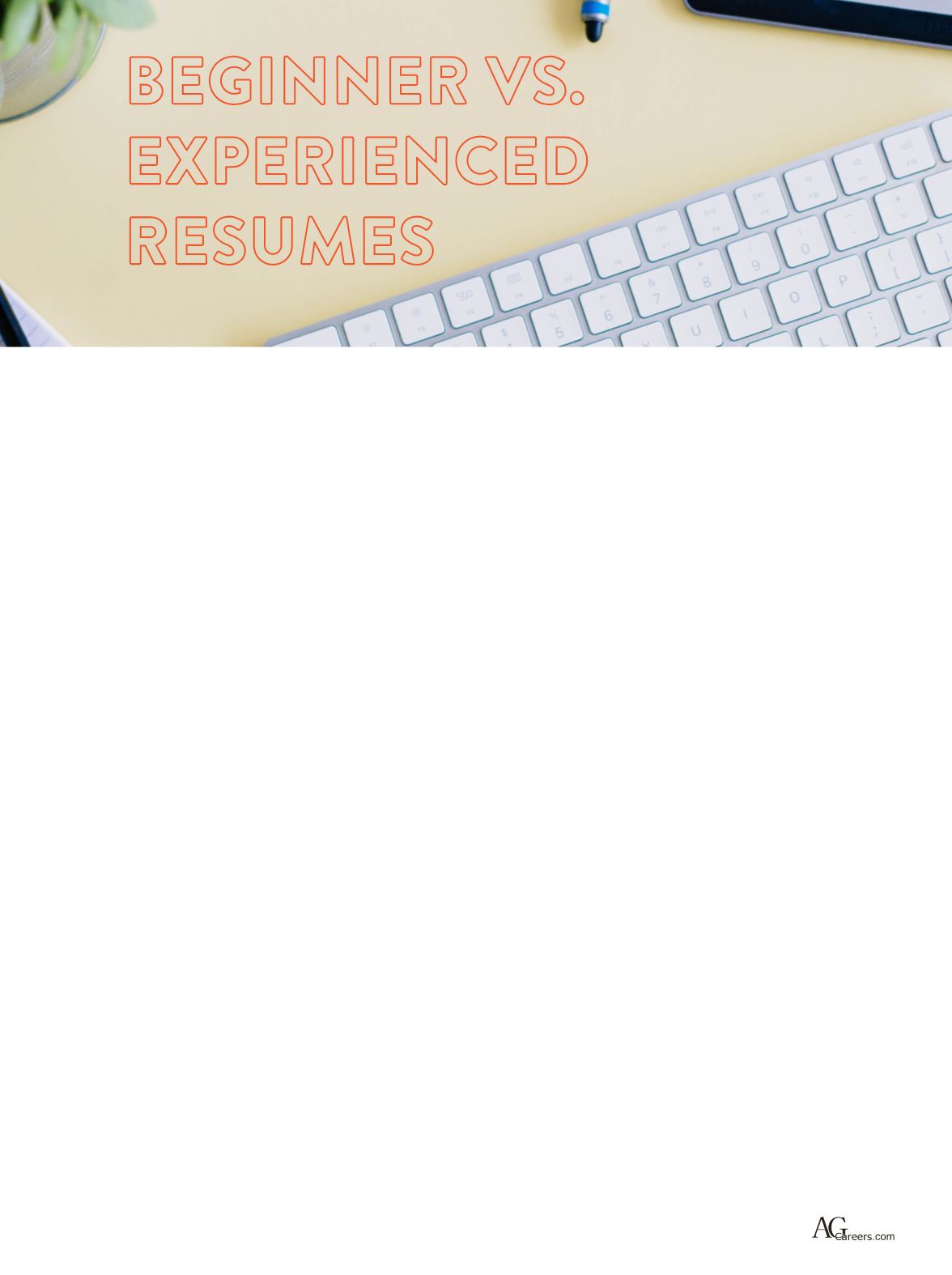

by Bonnie Johnson,
AgCareers.comMarketing Specialist
YOU GOOGLE
“resume templates”
and find examples full of decades-long
work experiences and glowing
accomplishments. It’s sometimes
daunting for students to build their first
resume after viewing experienced
professionals’ resumes. You may ask
yourself where to start, or if you can even
compete.
Get your confidence in check, because
there are a few very striking differences
and expectations between beginner and
experienced resumes. Students can really
stand out with several resume techniques.
Bill Baker, Talent & Culture Programs
Lead for J.R. Simplot Company shared a
positive aspect about new grads, “They
typically don’t have bad workplace
behaviors engrained yet; oftentimes
more experienced workers know how to
do one thing very well, but lack breadth.”
He recommends, “Students showcase
the variety of things they’ve done to
learn new technologies and keep their
skills sharp.”
Whereas professional resumes
focus on work experiences and
accomplishments, student resumes focus
on education and skill development.
LENGTH
Concise, to-the-point, and easily readable
are vital characteristics for every resume,
no matter your career stage. One-page
resumes are recommended for those
building their first resume, entry-level
applicants, students, and recent
graduates. If your resume spills over onto
a second page, immediately think TMI.
Cut the fluff, unnecessary filler words,
and irrelevant information.
EDUCATION
Education is front and center on the
student or new grad resume and appears
near the top. “Students and recent
graduates should include their GPA if
it’s above 3.0,” said Tom Heady, Leader
– Campus Recruiting at Elanco Animal
Health. “If a student leaves GPA off their
resume, it can be misinterpreted as not
good,” added Heady.
On the other hand, there’s no need
to advertise a GPA below 3.0, so keep it
off. You may also include your major GPA
if it’s likely to impress. Required resume
data includes expected or actual
graduation date, degree(s), and school.
You may also add areas of concentration
and special recognition.
Traditional students may not possess
extensive work histories, but classes also
provide experience. Baker recommends
that students, “Show projects and topics
learned, not just your degree.”
“Relevant coursework or projects
that align to the role you’re applying for
are crucial for students,” added Baker.
Feature key courses and upper-level
major-related classes that relate to the
desired career pathway.
In contrast, experienced professionals
shift their education section toward the
bottom of their resume and omit GPA,
specific classes, and maybe even the
graduation year.
EXPERIENCE
After you’ve been in the work world for
a few years, the experience section
really takes over most of the resume.
Experienced professionals feature their
experiences in reverse chronological
order (most recent first) and typically
omit high school or college jobs.
However, part-time or summer jobs
are often the bulk of experiences
students can share. How do young
professionals illustrate their valuable
experiences in a resume? Filling in this
section of the resume can be the most
intimidating part for students.
Certainly, highlight any work and
internships related to your field of
study and/or the potential job. All work
experiences, no matter how
inconsequential they seemed at the time,
help you build valuable employability soft
skills transferable to full-time work after
college. “There are two ways to describe
these jobs; sticking to the basics by
minimizing the experience, or going
>>>
BEGINNER VS.
EXPERIENCED
RESUMES
9
A
g
& F
ood
C
Areer
g
uide
















